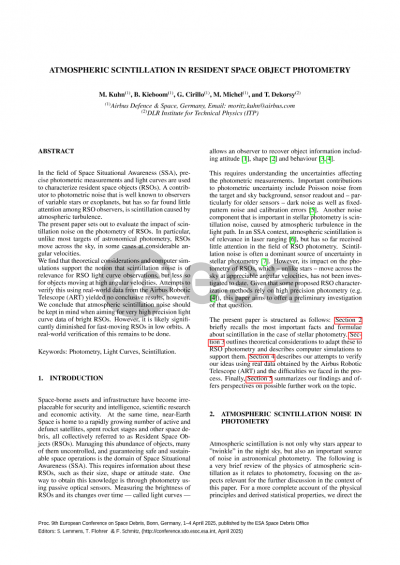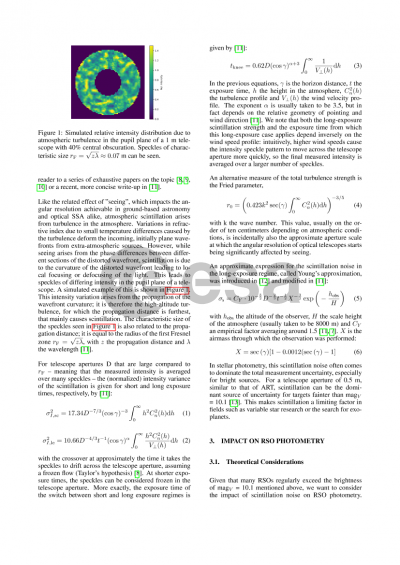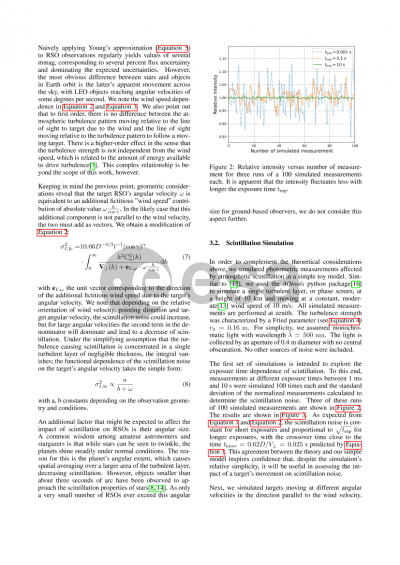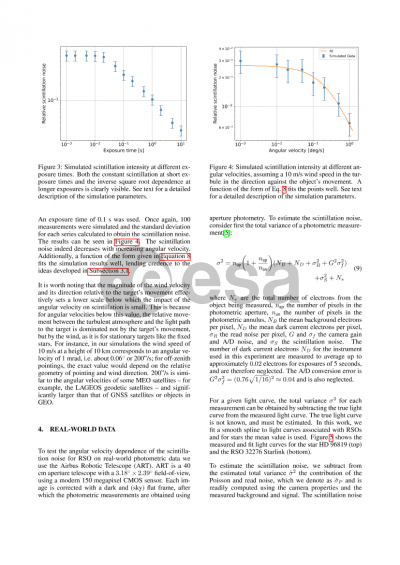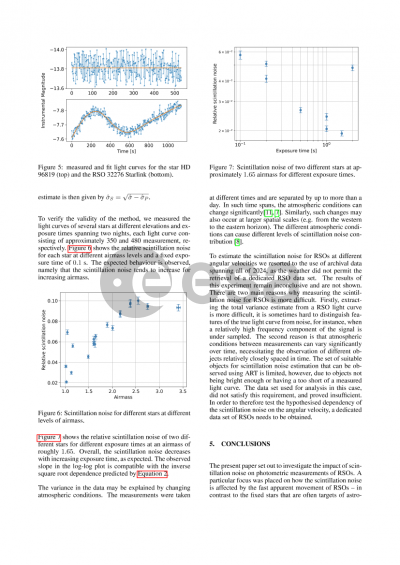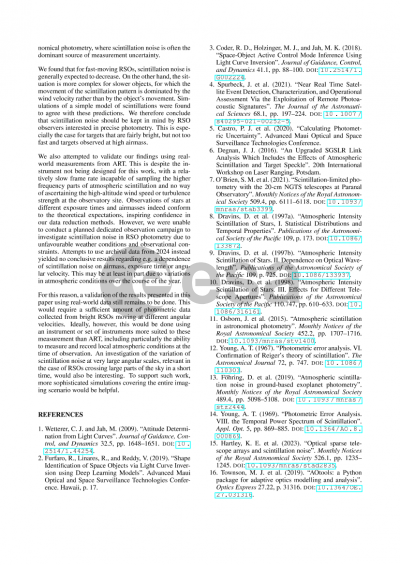Document details
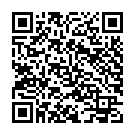
Abstract
Space-borne assets and infrastructure have become irreplaceable for security and intelligence, scientific research and economic activity. At the same time, near-Earth Space is home to a rapidly growing number of active and defunct satellites, spent rocket stages and other space debris, all collectively referred to as Resident Space Objects (RSOs). Managing this abundance of objects, many of them uncontrolled, and guaranteeing safe and sustainable space operations requires information about them, such as their size, shape or attitude state.
One way to obtain this knowledge is through photometry using passive optical sensors. Measuring the brightness of RSOs and its changes over time – called light curves – allows object information to be recovered. This requires understanding the uncertainties affecting the photometric measurements. Important contributions to photometric uncertainty include Poisson noise from the target and sky background, sensor readout and – particularly for older sensors – dark noise as well as fixed-pattern noise and calibration errors. Another noise component that is familiar to stellar photometrists but has so far received little attention in the field of RSO photometry is scintillation noise. This noise, caused by atmospheric turbulence in the light path, is often a dominant source of uncertainty in stellar photometry.
However, its impact on the photometry of RSOs, which – unlike stars – move across the sky at appreciable angular velocities, has not been investigated to date. The present paper starts by applying methods from stellar photometry to theoretically estimate this impact. We then derive an expression for the scintillation noise variance in the RSO case, considering the different angular velocities of RSOs in different orbital regimes.
The predicted scintillation noise for RSOs is then compared to the expressions from stellar photometry. We compare the results to real-world photometric data obtained using the Airbus Robotic Telescope (ART), a passive optical telescope operated by Airbus Defence and Space and located in Extremadura, Spain. ART is a 40 cm aperture wide field-of-view instrument equipped with a modern CMOS sensor for use in research to support Space Situational Awareness.
Finally, we discuss the implications of scintillation noise for RSO photometry and light curve-based RSO characterization efforts.
Preview
